It is no secret that breakfast is an important meal. Eating breakfast provides you with physical and mental energy to start the day, along with vitamins and minerals. Cereal is a quick, versatile, and budget-friendly breakfast choice. The benefits of eating a healthy cereal include increased fiber intake and lower body weight. But navigating the cereal aisle at your local grocery store can be an overwhelming experience. This three-page fact sheet is the Spanish language version of Shopping for Health: Breakfast Cereals, http://edis.ifas.ufl.edu/fs274. Written by Jenna Seckar and Wendy J. Dahl and published by the Food Science and Human Nutrition Department.
http://edis.ifas.ufl.edu/fs280
Tag: Shopping for Health series
De Compras Para la Salud: Mariscos

El marisco es un término general para todo tip de pescados y mariscos (USDA 2010). Los mariscos son parte del “grupo de alimentos de proteína” de MyPlate y también proporciona otros nutrientes necesarios para una buena salud (USDA 2011). Como hay muchos beneficios para la salud associados con la inclusión de los mariscos en la dieta, se recomienda que los adultos consuman al menos ocho onzas de una variedad de mariscos cada semana. Mientras que comer más mariscos se recomienda como parte de una dieta saludable, es importante tener en cuenta su presupuesto al hacer compras de mariscos. Este artículo explica los beneficios para la salud de los mariscos y ofrece algunas estrategias para ahorrar dinero para hacer los mariscos más asequible. This four page fact sheet is the Spanish language version of http://edis.ifas.ufl.edu/fs247, written by Michelle Brown and Wendy J. Dahl, and published by the Food Science and Human Nutrition Department.
http://edis.ifas.ufl.edu/fs275
Shopping for Health: Breakfast Cereals
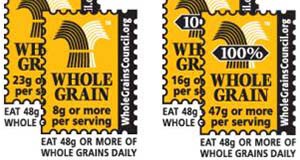
It is no secret that breakfast is an important meal. Eating breakfast provides you with physical and mental energy to start the day, along with vitamins and minerals. Cereal is a quick, versatile, and budget-friendly breakfast choice. The benefits of eating a healthy cereal include increased fiber intake and lower body weight. But navigating the cereal aisle at your local grocery store can be an overwhelming experience. Continue reading this three-page fact sheet to learn more about cereal and how to find your new go-to breakfast choices. Written by Jenna Sechar and Wendy J. Dahl, and published by the Food Science and Human Nutrition Department.
http://edis.ifas.ufl.edu/fs274
Shopping for Health: Snack Foods
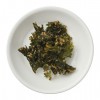 At first glance, you might think that snacking should be avoided because of the extra calories they can add to your diet. However, studies have shown there may be benefits when healthy snack choices are made. Read this 4-page fact sheet to learn about the benefits of healthy snacks and to learn healthy snack shopping tips. Includes recipes for homemade crispy kale chips and peanut butter and jelly yogurt. Written by Carley Rusch and Wendy J. Dahl, and published by the UF Department of Food Science and Human Nutrition, January 2015. (Photo: iStock/Thinkstock.com)
At first glance, you might think that snacking should be avoided because of the extra calories they can add to your diet. However, studies have shown there may be benefits when healthy snack choices are made. Read this 4-page fact sheet to learn about the benefits of healthy snacks and to learn healthy snack shopping tips. Includes recipes for homemade crispy kale chips and peanut butter and jelly yogurt. Written by Carley Rusch and Wendy J. Dahl, and published by the UF Department of Food Science and Human Nutrition, January 2015. (Photo: iStock/Thinkstock.com)
http://edis.ifas.ufl.edu/fs262
Shopping for Health: Seafood
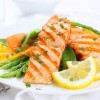 Seafood is part of the protein foods group of MyPlate and also provides other nutrients needed for good health. Because of the many health benefits, adults should consume at least eight ounces of a variety of seafood every week. Still, it is important to consider your budget when shopping for seafood. This 4-page fact sheet explains the health benefits of seafood and offers some money-saving strategies for making seafood more affordable. Written by Michelle Brown and Wendy J. Dahl, and published by the UF Department of Food Science and Human Nutrition, April 2014. (Photo: Elena Gaak/iStock/Thinkstock)
Seafood is part of the protein foods group of MyPlate and also provides other nutrients needed for good health. Because of the many health benefits, adults should consume at least eight ounces of a variety of seafood every week. Still, it is important to consider your budget when shopping for seafood. This 4-page fact sheet explains the health benefits of seafood and offers some money-saving strategies for making seafood more affordable. Written by Michelle Brown and Wendy J. Dahl, and published by the UF Department of Food Science and Human Nutrition, April 2014. (Photo: Elena Gaak/iStock/Thinkstock)
http://edis.ifas.ufl.edu/fs247
Shopping for Health: Foods with Added Fiber
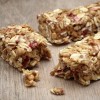 Fiber in foods consists of carbohydrates that cannot be digested. Although many foods naturally contain fiber, high-fiber ingredients are commonly added to foods to increase their fiber content. Fiber ingredients may be added to foods for health or functional reasons. This 3-page fact sheet was written by Wendy Dahl, and published by the UF Department of Food Science and Human Nutrition, November 2013.
Fiber in foods consists of carbohydrates that cannot be digested. Although many foods naturally contain fiber, high-fiber ingredients are commonly added to foods to increase their fiber content. Fiber ingredients may be added to foods for health or functional reasons. This 3-page fact sheet was written by Wendy Dahl, and published by the UF Department of Food Science and Human Nutrition, November 2013.
http://edis.ifas.ufl.edu/fs235
Shopping for Health: Herbs and Spices (FSHN1303/FS225)
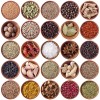 Herbs and spices have been used for hundreds of years in cooking and medicine. They add a wide range of flavors to food and may also provide health benefits. For some people, using herbs and spices in cooking may be a challenge, but it doesn’t have to be that way! The information below will get you on track to enjoying zesty, flavorful, healthy cooking.This 4-page fact sheet was written by Jenna A. Norris and Wendy Dahl, and published by the UF Department of Food Science and Human Nutrition, April 2013.
Herbs and spices have been used for hundreds of years in cooking and medicine. They add a wide range of flavors to food and may also provide health benefits. For some people, using herbs and spices in cooking may be a challenge, but it doesn’t have to be that way! The information below will get you on track to enjoying zesty, flavorful, healthy cooking.This 4-page fact sheet was written by Jenna A. Norris and Wendy Dahl, and published by the UF Department of Food Science and Human Nutrition, April 2013.
http://edis.ifas.ufl.edu/fs225
Shopping for Health: A Menu for One (FSHN1302/FS224)
 In today’s busy world, many Americans find themselves cooking meals for one. Older adults and college students alike face the challenge of making meal preparation a priority when no one else is depending on them to create a balanced meal. Whether you pop a dish into the microwave after a busy day or spend time cooking a special meal for yourself, shopping for and preparing healthy, low-cost meals for one can be easy and enjoyable with just a little bit of planning. This 4-page fact sheet was written by Morgan Denhard and Wendy Dahl, and published by the UF Department of Food Science and Human Nutrition, February 2013.
In today’s busy world, many Americans find themselves cooking meals for one. Older adults and college students alike face the challenge of making meal preparation a priority when no one else is depending on them to create a balanced meal. Whether you pop a dish into the microwave after a busy day or spend time cooking a special meal for yourself, shopping for and preparing healthy, low-cost meals for one can be easy and enjoyable with just a little bit of planning. This 4-page fact sheet was written by Morgan Denhard and Wendy Dahl, and published by the UF Department of Food Science and Human Nutrition, February 2013.
http://edis.ifas.ufl.edu/fs224
Shopping for Health: Fruit (FSHN1220/FS215)
 Fruits taste good, and they are good for you. Some fruits are very nutrient dense. This means they contain lots of the vitamins, minerals, antioxidants, and fiber that your body needs to stay healthy. Whether you like fresh fruit or fruit juice, frozen fruit or fruit from a can, it’s important to choose a variety of different fruits every day. Here are some tips to help you before, during, and after your fruit shopping trip. This 3-page fact sheet was written by Ashley R. Kendall and Wendy J. Dahl, and published by the UF Department of Food Science and Human Nutrition, March 2013.
Fruits taste good, and they are good for you. Some fruits are very nutrient dense. This means they contain lots of the vitamins, minerals, antioxidants, and fiber that your body needs to stay healthy. Whether you like fresh fruit or fruit juice, frozen fruit or fruit from a can, it’s important to choose a variety of different fruits every day. Here are some tips to help you before, during, and after your fruit shopping trip. This 3-page fact sheet was written by Ashley R. Kendall and Wendy J. Dahl, and published by the UF Department of Food Science and Human Nutrition, March 2013.
http://edis.ifas.ufl.edu/fs215
Shopping for Health: Yogurt (FSHN1201/FS185)
 Yogurt has become a popular item in the American diet and has taken over the majority of the dairy section in many stores. Have you ever wondered what yogurt is, what its health benefits are, or what the differences are among the types of yogurts? Read this 4-page fact sheet to find the answers to these questions and to learn more about yogurt. Written by Stephanie B. Meyer, Ada Medina-Solórzano, and Wendy J. Dahl and published by the UF Department of Food Science and Human Nutrition, January.
Yogurt has become a popular item in the American diet and has taken over the majority of the dairy section in many stores. Have you ever wondered what yogurt is, what its health benefits are, or what the differences are among the types of yogurts? Read this 4-page fact sheet to find the answers to these questions and to learn more about yogurt. Written by Stephanie B. Meyer, Ada Medina-Solórzano, and Wendy J. Dahl and published by the UF Department of Food Science and Human Nutrition, January.
http://edis.ifas.ufl.edu/fs185
Shopping for Health: Guide to Frozen Meals (FSHN1202/FS186)
 Busy schedules, limited cooking space, or a lack of kitchen equipment may limit what you eat at meals. But with the large variety of frozen meals that are now in grocery stores, it’s possible to expand your food options and still eat tasty and healthy meals. The key is to know what to look for when you are shopping. To learn how to choose delicious meals that meet your taste preferences and your health needs, read this 3-page fact sheet written by Sarah A. Glenny and Wendy J. Dahl, and published by the UF Department of Food Science and Human Nutrition, January 2012.
Busy schedules, limited cooking space, or a lack of kitchen equipment may limit what you eat at meals. But with the large variety of frozen meals that are now in grocery stores, it’s possible to expand your food options and still eat tasty and healthy meals. The key is to know what to look for when you are shopping. To learn how to choose delicious meals that meet your taste preferences and your health needs, read this 3-page fact sheet written by Sarah A. Glenny and Wendy J. Dahl, and published by the UF Department of Food Science and Human Nutrition, January 2012.
http://edis.ifas.ufl.edu/fs186
Shopping for Health: Vegetarian Diets (FSHN1106/FS167)
 Well-balanced vegetarian diets can be nutritious and provide a variety of health benefits, but they are at higher risk for several nutrient deficiencies, including iron, vitamin B12, calcium, and zinc. This 6-page fact sheet lists foods that are rich in these nutrients. Written by Lauren Foster and Wendy J. Dahl , and published by the UF Department of Food Science and Human Nutrition, June 2011. (photo courtesy of elenaspantry.com)
Well-balanced vegetarian diets can be nutritious and provide a variety of health benefits, but they are at higher risk for several nutrient deficiencies, including iron, vitamin B12, calcium, and zinc. This 6-page fact sheet lists foods that are rich in these nutrients. Written by Lauren Foster and Wendy J. Dahl , and published by the UF Department of Food Science and Human Nutrition, June 2011. (photo courtesy of elenaspantry.com)
http://edis.ifas.ufl.edu/fs167
Shopping for Health: Vegetables (FSHN1104/FS165)

Choosing the right vegetables will help you get the nutrients your body needs every day. With so many choices though, vegetable shopping can seem like a hard task—but it doesn’t have to be. This 4-page fact sheet will help you learn to become a smarter vegetable shopper. Written by Ashley R. Kendall and Wendy J. Dahl, and published by the UF Department of Food Science and Human Nutrition, June 2011.
http://edis.ifas.ufl.edu/fs165
